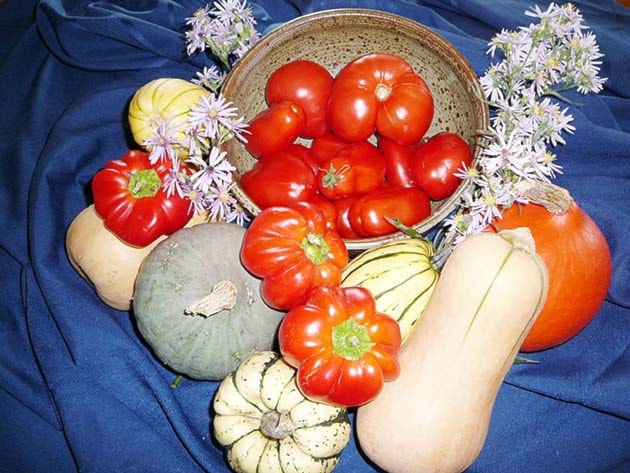Last Tuesday I took my 95-year-old dad, Art Hughes-Games, on a delightful drive through East �������� orchards.
He came to �������� in 1926 and is full of the history of the area.
Listening to his stories and remembering my own childhood, I am filled with gratitude to have lived here most of my life.
The valley is beautiful and filled with abundance. The climate is great for growing most of our food.
 Our family had a quarter acre vegetable garden. Canned and frozen produce lasted us until the garden began producing the next year.
Our family had a quarter acre vegetable garden. Canned and frozen produce lasted us until the garden began producing the next year.
All four children helped. We all grew up to be gardeners.
�������� was small and mostly an agricultural community. Capri Mall was a pear orchard. There was a pig farm at Sutherland and Burtch. Rutland was a separate community of orchards and farms.
The fascinating pictures of fruit box labels on electrical boxes around town gives a sample of the names of many old packing houses.
The present Cultural District was filled with packing houses including the Rowcliffe Cannery. They canned tomatoes among other things.
As well as fruit, lots of vegetables were grown to be shipped to other places.
Produce was loaded into freight cars that were barged down the lake to Penticton to link up with the railway.
Things have changed dramatically since the 1950’s. Much good farmland has been covered with houses, roads, parking lots, shopping malls and industrial buildings.
With cheap transportation we have come to expect to eat fresh produce, like strawberries, all year round. Most of our food is imported.
Public and government support for local agriculture has diminished.
Fortunately the Agricultural Land Reserve was created in the 1970s. Without this all the arable land would likely have been sold and built on.
As transportation costs increase and water becomes scarcer for growing crops in places like California, imported produce will become very expensive or unavailable just as it was when I was a child.
Now is the time to make sure our farmland is preserved, programs are created to help young farmers get started, and older farmers get support to make their farms more efficient. We need to prepare for the future by creating and supporting strong local food production now.
I am grateful to see signs of change.
Our large Farmer’s Market makes fresh local produce more readily available and connects buyers to farmers.
Some schools have gardens. Children love to grow their own food.
Recently I’ve been excited to see a substantial increase in vegetable gardening, especially among younger people.
From a xeriscaping perspective, a vegetable garden is an excellent alternative to lawn and water-thirsty ornamentals. It does need water but with good soil, drip irrigation and a layer of mulch to hold in the moisture, the water is used efficiently and it provides the gardener with healthy, ‘free’ food.
This Saturday, Oct. 8 from 10 a.m. to 3 p.m., �������� Veggies at 2570 Old Vernon Rd., is offering the remainder of their crops to anyone who wants to come and harvest. Gleaners can take home half of what they collect. The other half will be donated to the Okanagan Food Bank. Produce available includes various squash varieties, tomatoes, peppers, jalapeños, and eggplant.



